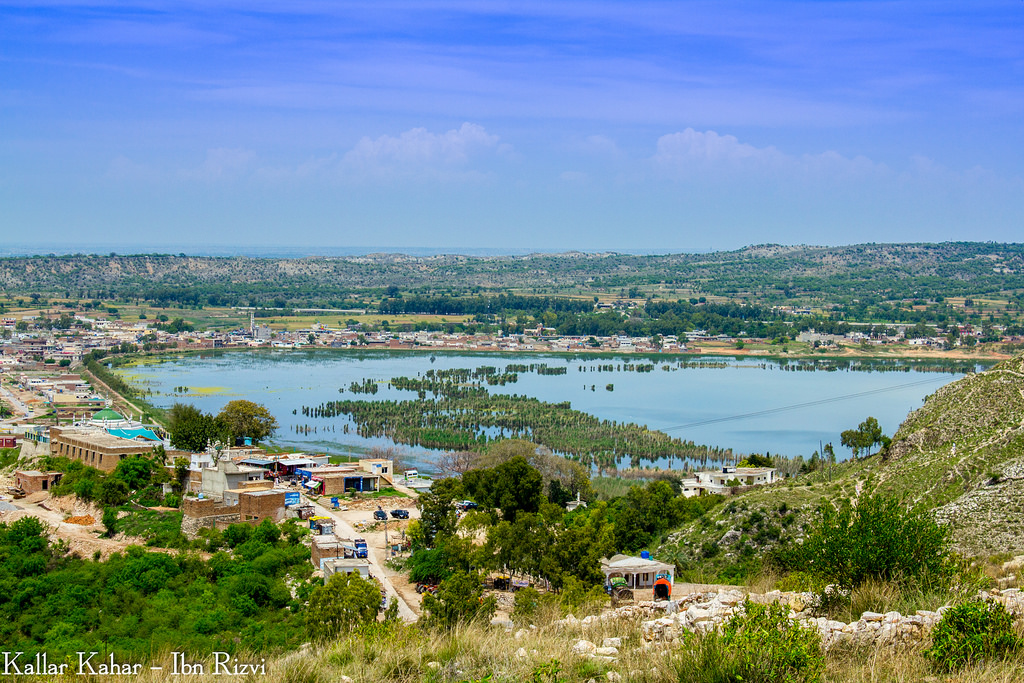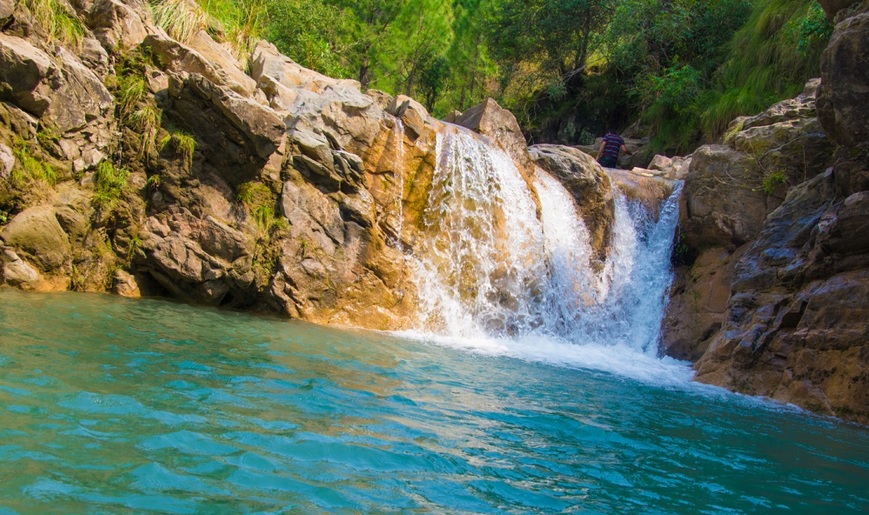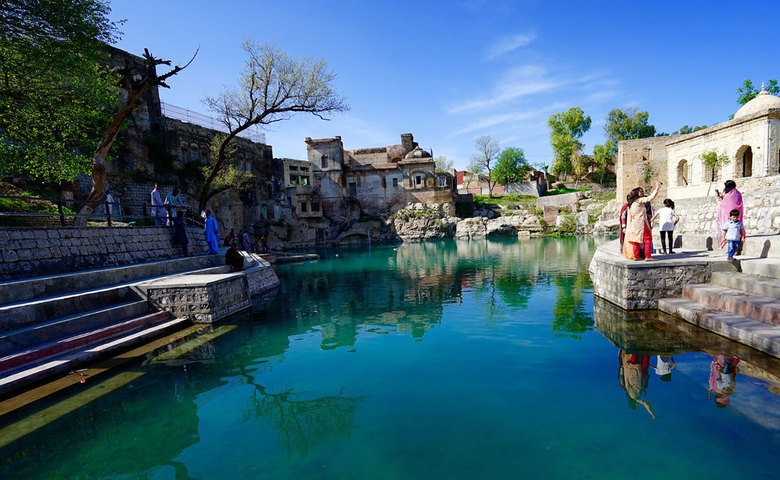kalar Kahar is situated 25 kilometers (15.5 miles) from the city of Chakwal, in District Chakwal of province Punjab, Pakistan. It is located about 125 kilometers (78 miles) from the city of Rawalpindi. Kallar Kahar is famous for Kallar Kahar Lake, Takht-e-Babri and beautiful species of peacocks. It is also famous for its natural gardens which are full of colorful flower and plants.

Kallar Kahar Lake is the most important reason for Kallar Kahar to be famous among tourists. It is a salt water lake. Situated at an altitude of 1500ft above sea level the lake is spread over an area of 8 kilometers. The maximum depth of lake is 4-5 feet. People enjoy pedal boating and motor boating on the lake. They also come here to spend picnics and holidays.
You May also Visit: Katas Raj Temples
The famous Mughal emperor Zahir-ud-Din Babar encamped in Kallar Kahar with his armies, when he was marching from Kabul to attack on Delhi with his armies. During his stay, a throne was built for him by cutting a big rock, where he addressed his army. Later the throne was named “Takht-e-Babri”. It still exists in Kallar Kahar and working as a popular tourist attraction.

People traveling from Lahore to Islamabad, prefer to stay here for recreation at the bank of salty water Lake. A number of farm houses are being built in this subdivision. It may become a central location for residence, business and markets in future.




